#madame antoine
Photo
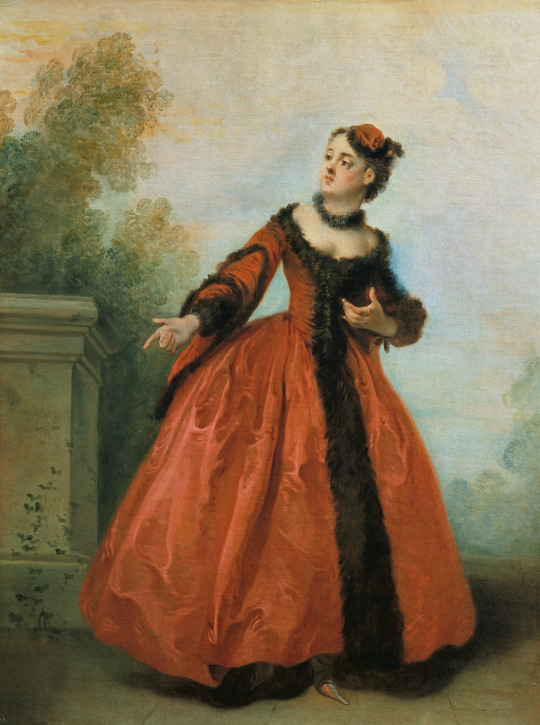




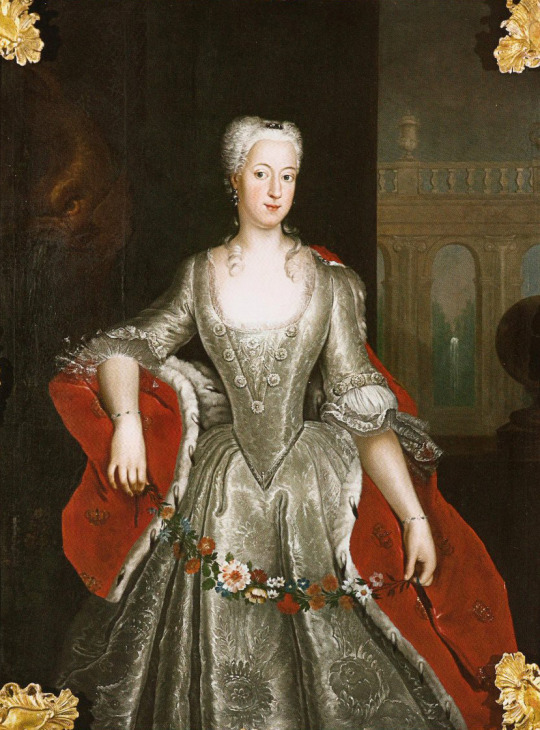
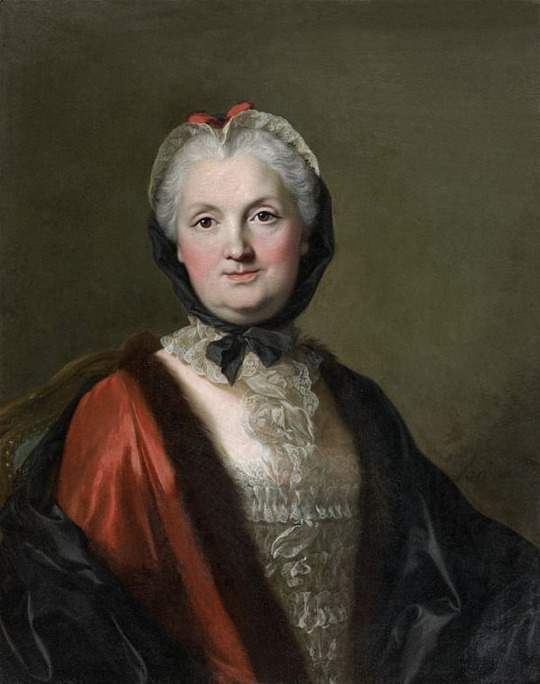
Early 1730s dresses and portraits (from top to bottom) -
ca. 1732 The Beautiful Greek (La Belle Grecque) by Nicolas Lancret (Wallace Collection - London, UK). From their Web site 1429X1960, The complex sleeves open at the top like they would in Russian court dresses a century later.
ca. 1732 Watson-Wentworth and Finch Families by Charles Philips (Yale Center for British Art, Yale University - New Haven, Connecticut, USA) persons. From Wikimedia 4902X3094. The décolletage-filling fichu would become prominent in the Louis XVI era, but just about every grown up woman wears one along with a fastened bodice, round skirt, and apron. The heads of every female are covered by a cap, veil, or hat.
1733 Marie-Geneviève le Tonnellier de Breteuil by French school (attributed to Alexis Simon Belle) (auctioned by Sala de Ventas).From invaluable.com/auction-lot/18th-century-french-school-alexis-simon-belle-a-646-c-2074af1b03 1940X3362.Round skirts flourish on both shores of the channel.
ca. 1730-1735 Lady by Joseph Highmore (National Gallery of Art - Washington, DC, USA). From their Web site 1148X1495. The cuffed outer sleeves are stuffed by under-sleeves and the dress lining has a very subdued pink contrasting with the gold color of the other layer.
1734 Princess Sophie Dorothea with Friedrich Wilhelm by Antoine Pesne (location ?). From Wikimedia1633X2611. Textiles with large patterns characterize the early 1700s. Her dress has a square neckline.suggesting French influence.
ca. 1734 Wilhelmine of Prussia, Margravine of Brandenburg-Bayreuth by Antoine Pesne (location ?). From Wikimedia 829X11221. The silver brocade over-bodice has a deep V neckline filled in with scoop neckline.
1734 Madame Marie du Tour Vuillard (1695- 1759), née Robin by Louis Michel Van Loo (Tajan - 12-12-12 auction Lot 37), From their Web site; fixed spots & flaws w Pshop 2487X3151.
#1730s fashion#Georgian fashion#Louis XV fashion#Rococo fashion.#The Beautiful Greek#Nicolas Lancret#fur-trimmed dress#Charles Philips#Marie-Geneviève le Tonnellier de Breteuil#Alexis Simon Belle#curly hair#tabbed bodice#Joseph Highmore#Princess Sophie Dorothea#Antoine Pesne#Wilhelmine of Prussia#Madame Marie du Tour Vuillard#Louis Michel Van Loo#wire cap#lace choker#fur trim
74 notes
·
View notes
Text

Bust of Madame Récamier, by Jean-Antoine Houdon (1741-1828) after Joseph Chinard (1756-1813)
#Bust of Madame Récamier#Jean-Antoine Houdon#Joseph Chinard#1700s#18th century#sculptor#art#art history#sculpture#art history blog#artwork
212 notes
·
View notes
Photo
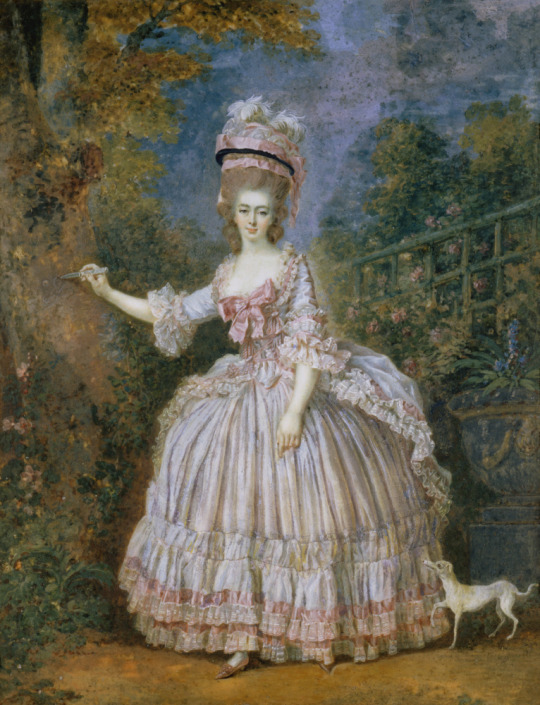
My next dress by the talented Madame Jejette (a.k.a. Anna Nurzynska) of Atelier Saint Honoré will be a reproduction of this delightful robe a la polonaise in the portrait of Marie Anne Révérend, Mme Antoine Vestier, by her husband, the artist.
The dress will be made with silk and cotton ivory batiste, pale pink tafetta and of copious amounts of delicate lace.
#fashion#personal#painting#aux temps de marie antoinette#1780s#xviiie siècle#madame jejette#atelier de saint honore#antoine vestier#robe#robe a la polonaise#killem-all-if-they-wont-eat-cake
52 notes
·
View notes
Text

Portrait of Madame Larmoyer, holding a lyre-guitar
Antoine Vestier, French
circa 1804, Napoleonic era
#Antoine Vestier#vestier#empire#empire style#Madame Larmoyer#19th century#napoleonic era#first french empire#french empire#art#napoleonic#french#1800s#pretty#french art#19th century art#neoclassical#neoclassical art#neoclassicism#portrait#painting#portraiture#woman#fashion history#lyre#guitar#music#instrument#classical music#classical
3 notes
·
View notes
Text
LE FILLE DE MADAME ANGOT à l'Opéra Comique, un vrai délice
Opéra bouffe, opérette, opéra comique, tous ces noms correspondent à ce que l’on peut applaudir à l’Opéra Comique de la place Boieldieu à Paris. Et le programme de ce superbe théâtre a de quoi plaire au plus grand nombre. Et c’est bien le cas avec cette première production de lA SAISON : LA FILLE DE MADAME ANGOT.
Cette œuvre était un peu oubliée, signée Charles Lecocq, , qui fut créée aux…

View On WordPress
#Antoine Foulon#Bruno de Lavenère#Charles Lecocq#Floriane Derthe#François Pardailhé.#Geoffrey Carey#Hélène Guilmette#Jacques Offenbach#Jean-Louis Fernandez#JULIEN BEHR#La chauve souris#LA FILLE DE MADAME ANGOT#La vie parisienne#Matthieu Walendrzik#Metthieu Lécroart#Opera Comique#Pierre Derhet#Richard Brune#Véronique Gens
0 notes
Text
I miss him
1 note
·
View note
Note
I enjoy your blog and I’m not trying to be argumentative; just some friendly debate, but I notice you and Virginia both frequently reduce the entire Antoinette ordeal to Louis’ feeding habits and Lestat’s need for attention and adoration. Don’t you think Lestat had to have at least a little love for Antoinette? He had to love her on some level not to kill her right off the bat. This is apparent in the scene before Louis is playing cards before Doris tells him Jonah is there, Lestat is standing up close to the stage, completely entranced watching Antoinette perform like there is no one else in the room. Louis isn’t even present to make jealous. He slept with her and didn't kill her before Loustat was having serious problems like lack of intimacy. He stayed with her just as long as he stayed with Louis. I’m sorry, but I don’t think that man ever had any intention of being in a monogamous relationship.
Hey nonny!
(All good, you can be argumentative, as long as you're kind it's all fine, I just won't accept hate or insults anymore^^, hope that makes sense! Also, I really don't see that as argumentative^^)
I think @virginiaisforvampires and I just ... shorten the Antoinette discussion at times (by now) because it's been... a theme.
Like, the fandom latched onto the jealousy angle so massively, the asks wrt her were so numerous, the human cheating AUs on Ao3 so prevalent... the vampiric aspect seems to be often overlooked.
I think you're referring to my ask with the open relationship?
Because of course Antoinette was more.
(this is long, so the rest under the cut:)
She became more when he did not kill her as a feeding fling. (And I still stand by the fact that they must have had a lot of feeding flings, for example Louis is not really taken aback by soldiers in their bedroom - the same bedroom he gets so sharp about with Antoinette, which is another detail.)
So yes, Lestat apparently slept with her and didn't kill her. We don't get to see it, but it is insinuated.
But there is a lot more to Antoinette, and that is why some think she might show up again later. I am not sure if you're familiar with "the musician" from IWTV, "Antoine" from the later books?
Let me recap:
In IWTV we have the unnamed "musician". Louis never bothers to find out his name, even though it is clear that Lestat turns him. That unnamed musician then gets into the crossfire of Claudia's attempt on Lestat's life, and Louis... forgets about him. But he did know about him from the beginning:
"Lestat had a musician friend in the Rue Dumaine. We had seen him at a recital in the home of a Madame LeClair, who lived there also, which was at that time an extremely fashionable street; and this Madame LeClair, with whom Lestat was also occasionally amusing himself, had found the musician a room in another mansion nearby, where Lestat visited him often. I told you he played with his victims, made friends with them, seduced them into trusting and liking him, even loving him, before he killed. So he apparently played with this young boy, though it had gone on longer than any other such friendship I had ever observed." [..]
"I could not tell whether he had actually become fond of a mortal in spite of himself or was simply moving towards a particularly grand betrayal and cruelty. Several times he’d indicated to Claudia and me that he was headed out to kill the boy directly, but he had not. And, of course, I never asked him what he felt because it wasn’t worth the great uproar my question would have produced. Lestat entranced with a mortal! He probably would have destroyed the parlor furniture in a rage."
(Interesting tidbit about the rage, which they picked up for the show!)
Louis even encounters Antoine, has a bit of a discussion with him after the initial attack on Lestat:
‘What is it?’ I asked him. ‘What did you need from him? I’m sure he would want me to...’
“ ‘He was my friend!’ He turned on me suddenly, his voice dropping with repressed outrage.
This last bit is important, for the later books, most importantly for "Prince Lestat", which we know Rolin takes from. Because in that book, in chapter 7, we find out what happened to "the musician", Antoine, after that fateful night, when Rue Royale burned (in the book).
Because Antoine did not burn to death (in the show, likely: Louis and Claudia did not know to scatter the ashes), and he survives, hideously burned, needing decades to heal. Lestat reunites with him before he chases after Louis and Claudia (to Europe).
When Antoine later tells of his own story, he says this:
“He was my friend, Lestat,” Antoine confessed. “He told me about his lover, Nicolas, who had been a violinist. He said he couldn’t speak his heart to his little family, to Louis or Claudia, that they would laugh at him. So he spoke his heart only to me.”
There is a LOT in that little paragraph. A lot that fits with what we know from the show, too.
Louis (in the show) tells of Lestat saying that "Antoinette fortifies him against them". Antoinette became more than a passing interest, a passing feeding fling, true, because Lestat can confide in her, can be himself with her, especially later, when things between him and Louis take on a strain. But he never leaves Louis, and I think that is often overlooked - (s)he was never a real threat to Louis, nor Claudia. Lestat left Antoine behind when he goes after them, to try to save them.
Louis on the show makes it seem as if Antoinette was that major threat. And the show (of course^^), sharpened that threat by making Antoine a woman, a white woman, whose very presence represented what Louis could not be in their relationship at the time, namely an official partner.
Louis uses the focus on Antoinette and what she represents to overshadow other things that coincide with the affair. He does the same later, when they are threatened, to shift the focus to Lestat's paranoia. It's clever, because it's built on truth, a "look at my right hand, not at my left" approach. But the real story is much more difficult than that.
And I think that goes for Antoine(tte) as well.
Since Rolin is specifically taking from "Prince Lestat" as well there is no way in hell he has somehow missed reading chapter 7, or has missed Antoine in the later books/chapters.
I for one wouldn't be surprised if she shows up at the trial - or in Dubai. Maybe she's that interior designer, who knows that Louis is missing the natural world....
I don't know. We'll see. But I doubt that the jealousy angle is all there is to it. There are too many discrepancies, even down to the make-up they used for her (which is its own meta). Lestat may have very well loved her, albeit differently than he loves Louis.
As for the monogamous relationship(s)...
Nonny, forgive me, but these are not humans. They are vampires.
They hunt, and kill humans, for food and pleasure. They play with their food, like other predators in our world do, too. They are also inherently hedonistic, looking for pleasure. (Maybe) Especially Lestat is trying to drown himself in the pleasurable things at times, for reasons that the show will still get to. Since the show explicitly added sex to the mix that desire is of course expressed in the hunt for pleasure, too.
But totally apart from "food", and sex... these vampires are a mess, relationship-wise.
When Lestat and Louis are "married" in the later books as Jacob calls it (I bet they'll make that literal in the show^^), that doesn't mean that they don't still love others. Have loved others. Will love others. They are beyond the need to narrow down their love though. And they are "official partners" then.
But it's... a knot of relationships and history.
Some of these people are truly immortal.
Like, can not be killed anymore.
Imagine living with that fact (it maybe most famously sends Lestat reeling in "The tale of the Body Thief", for example).
Imagine loving with that fact.
Imagine having the time.
#Anonymous#asks#ask nalyra#amc iwtv#iwtv#amc interview with the vampire#interview with the vampire amc#iwtv amc#iwtv 2022#interview with the vampire#lestat de lioncourt#louis de pointe du lac#loustat#antoinette brown#book quotes#prince lestat#antoine
89 notes
·
View notes
Photo
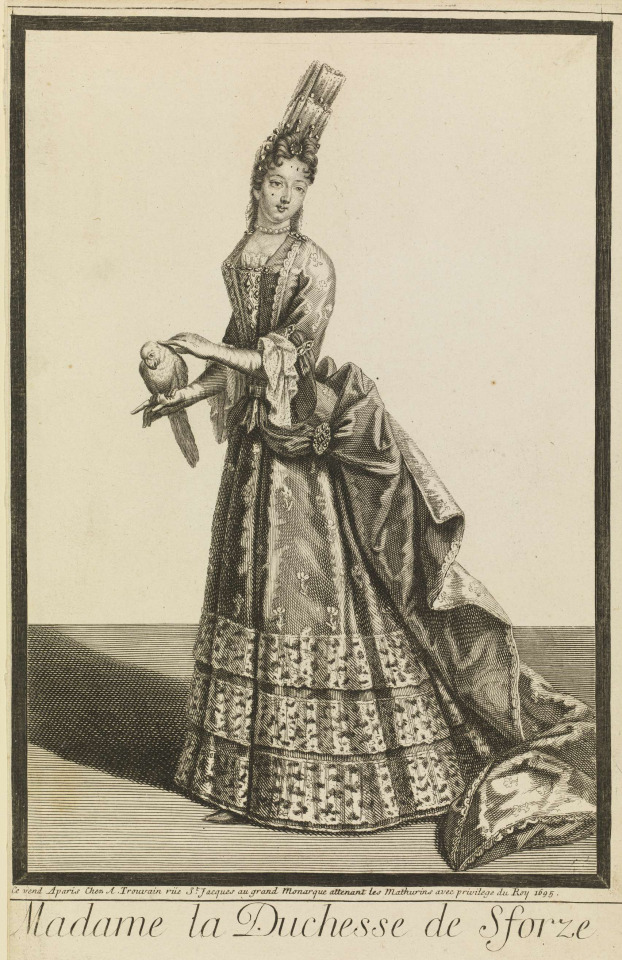
1695 Antoine Trouvain - Madame la Duchesse de Sforze
(Herzog Anton Ulrich Museum)
195 notes
·
View notes
Text

Madame Louis Antoine de Cambourg, 1846
Jean-Hippolyte Flandrin
#love the expression#sis looks so bored and unimpressed#art#painting#art history#fashion#portrait#black#1840s#19th century#french art
184 notes
·
View notes
Text
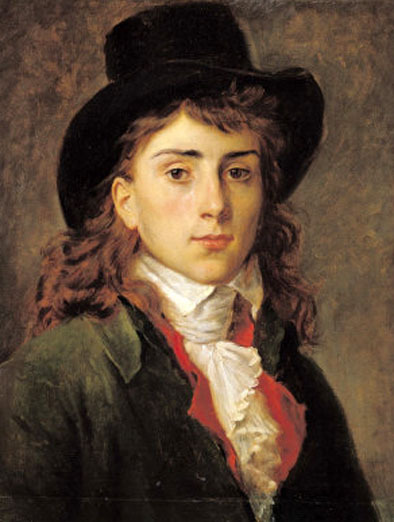
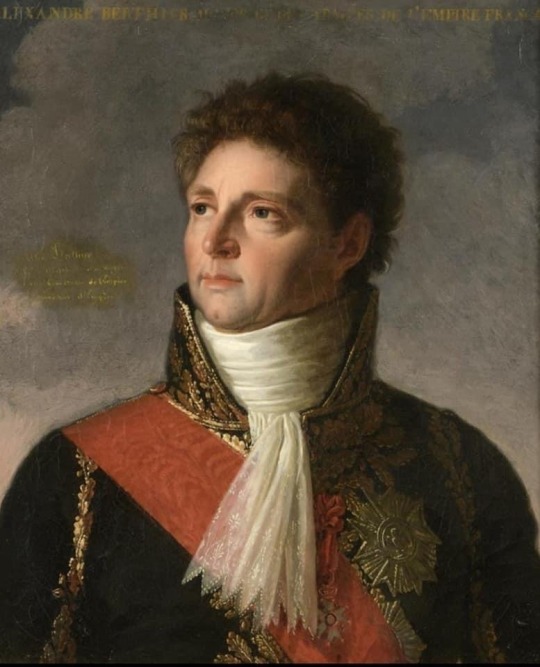
For a spot in the second round, we have a French face off.
Antoine-Jean Gros
"One of Napoleon’s main painters. Pioneer of French Romanticism. Inspired many artists such as Delacroix and Géricault. He was very pretty.”
the tags on his polls also keep mentioning Le Mis
Louis-Alexandre Berthier:
“Prodigial brainpower!!!! (I am sapiosexual!!!!) Able to work long hours!!! The fact that he would be so devoted to the love of his life (Madame Visconti), so much that he arranaged a ménage à trois. Very powerful. He was also always laughing before everything fell apart.”
28 notes
·
View notes
Text














taylor swift lyrics x colors x textiles in art – grey
Cold as You – Taylor Swift // Portrait of a Lady – Guillaume Voiriot 🪩Today was a Fairytale – Fearless // Portrait of a Father with His Daughter – Sigmund Barth 🪩 Bye Bye Baby – Fearless // Princess Amalie of Prussia – Antoine Pesne 🪩 Timeless – Speak Now // Madame Bergeret – François Boucher 🪩 Red – Red // Full-Length Portrait of a Man – Vittorio Matteo Corcos 🪩 I Bet You Think About Me – Red // Portrait of Sara Jacoba Lammers – Jan Palthe 🪩 So It Goes… – Reputation // Lady Mary Josephine Drummond – Jean-Baptiste Oudry 🪩 Getaway Car – Reputation // Queen Maria Amalia of Saxony – Giuseppe Bonito 🪩 London Boy – Lover // Portrait of Maria Clementina Sobieska – Pier Leone Ghezzi 🪩 gold rush – evermore // A Lady with a Book – Bartholomew Dandridge 🪩 coney island – evermore // Portrait of a Lady – Guillaume Voiriot 🪩 evermore – evermore // Empress Elisabeth of Austria – Georg Decker 🪩 Question…? – Midnights // Portrait of a Woman – Robert Peake the Elder 🪩 You’re Losing Me – Midnights // Portrait of Mademoiselle de Coislin – Louis Tocqué
#taylor swift lyrics x colors x textiles in art#grey#gray#taylor swift debut#fearless#fearless taylor swift#speak now#speak now taylor swift#red album#red taylor swift#reputation#reputation taylor swift#lover#lover taylor swift#evermore#evermore taylor swift#midnights#midnights taylor swift#taylor swift#ts edit#tswiftedit
69 notes
·
View notes
Photo
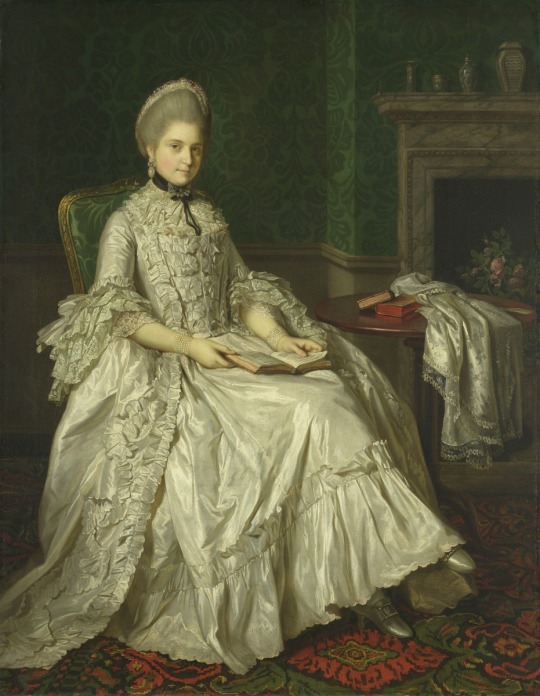

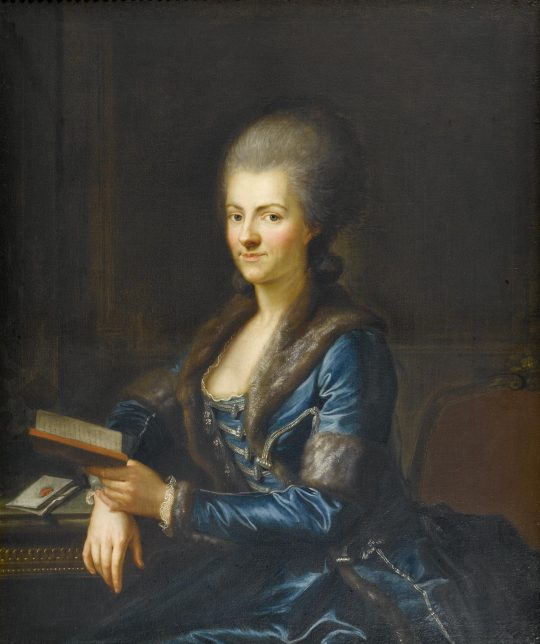

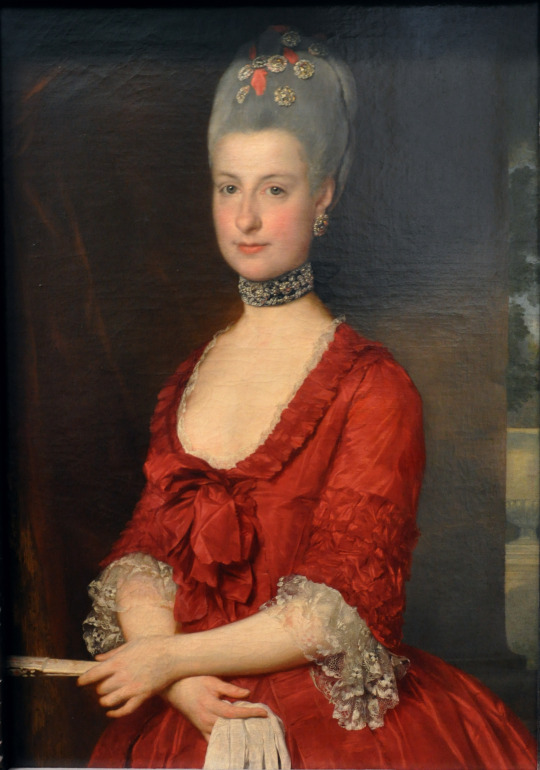

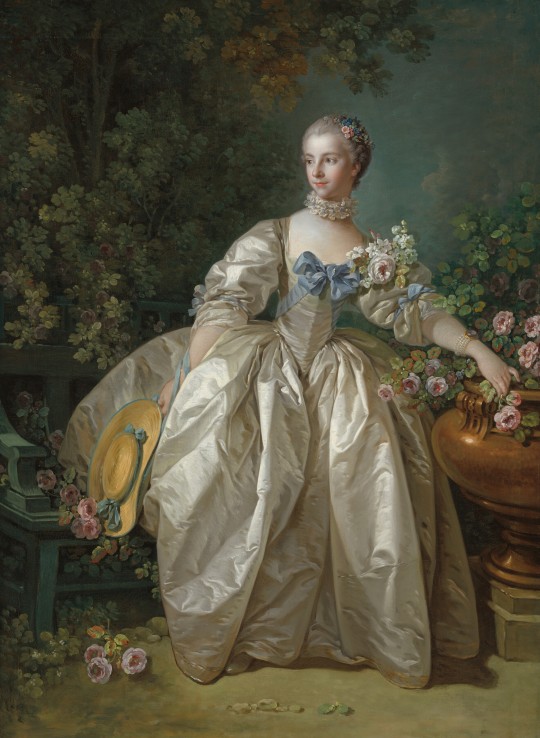


ca. 1766-1769 Maria Walpole, Duchess of Gloucester by ? (Virginia Museum of Fine Arts - Richmond, Virginia, USA). From history-of-fashion.tumblr.com/post/159078324404/ab-1766-1769-nathaniel-dance-holland-portrait 931X1200 @72 356kj.
1766 Comtesse Marie-Louise de Beaurepaire by Louis-Michel Van Loo (auctioned by Sotheby's). From their Web site; increased exposure 2167X2834 @150 7.6Mp.
From 1765 until 1766 Elisabeth Sulzer by Anton Graff (location ?). From Wikimedia via pinterest.com/SannaMaK/18th-century-fur-trim/ 1677X2000 @72 1Mj.
From 1765 until 1766 Elisabeth Sulzer by Anton Graff (location ?). From Wikimedia via pinterest.com/SannaMaK/18th-century-fur-trim/ 1677X2000 @72 1Mj.
ca. 1766 Mrs. Barnard Elliott, Jr. (Mary Elizabeth Bellinger Elliott) by Jeremiah Theus (Gibbes Museum of Art - Charleston, South Carolina, USA). From Wikimedia 2461X3001 @38pixels/cm 2.7Mj.
1766 Archduchess Maria Christina, Duchess of Teschen by Marcello Bacciarelli (Kunsthistorisches Museum - Wien, Austria). From Wikimedia 1828X2608 @300 1.3Mj.
1766 Annette, Comtesse de Vergennes in Oriental Costume by Antoine de Favray (private collection). From Google Art Project via Wikimedia 1974X2026 @97 3.5Mj.
1766 (?) Madame Bergeret by François Boucher (National Gallery of Art - Washington, DC, USA). From their Web site 2999X4096 #72 3.9Mj.
1766 Fête donnée par le prince de Conti au Prince héréditaire Charles Guillaume Ferdinand de Brunswick-Lunebourg by Michel Barthélemy Ollivier entire scene (Châteaux de Versailles et de Trianon - Versailles, Île-de-France, France)1117X.840 @96 414kj.
1766 Fête donnée par le prince de Conti au Prince héréditaire Charles Guillaume Ferdinand de Brunswick-Lunebourg by Michel Barthélemy Ollivier right center (Châteaux de Versailles et de Trianon - Versailles, Île-de-France, France) 1137X.852 @96 261kj
#1766 fashion#Rococo fashion#Georgian fashion#Louis XV fashion#Maria Walpole#Marie-Louise de Beaurepaire#Louis-Michel Van Loo#Elisabeth Sulzer#Anton Graff#Jeremiah Theus#Archduchess Maria Christina#Marcello Bacciarelli#Comtesse de Vergennes#turquerie#orientalism#Antoine de Favray#Madame Bergeret#Michel Barthélemy Ollivier#picnic scene
19 notes
·
View notes
Text


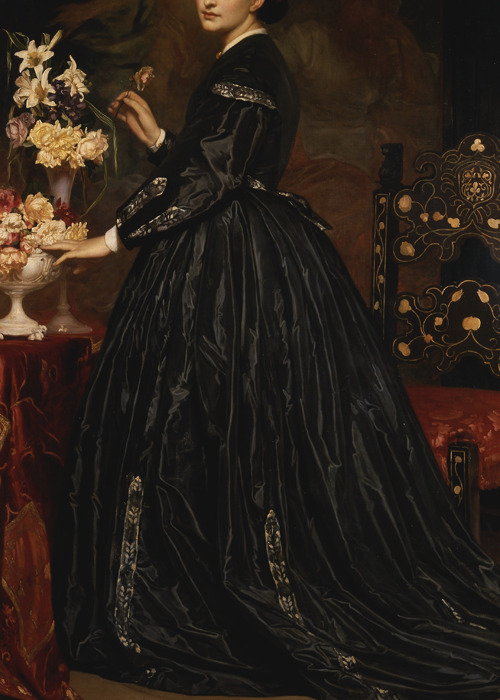



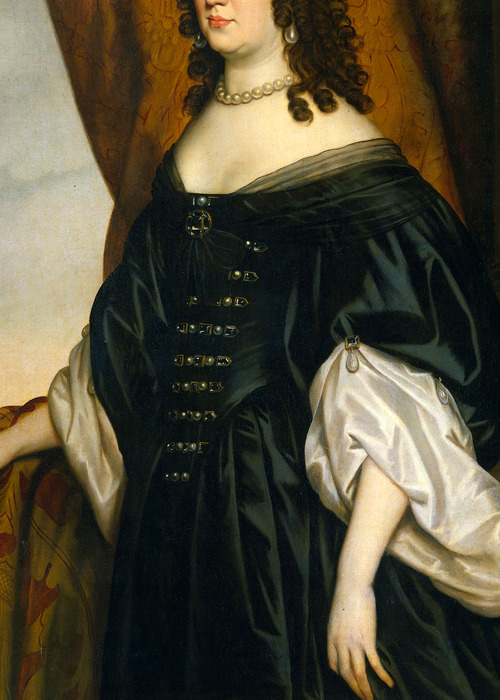


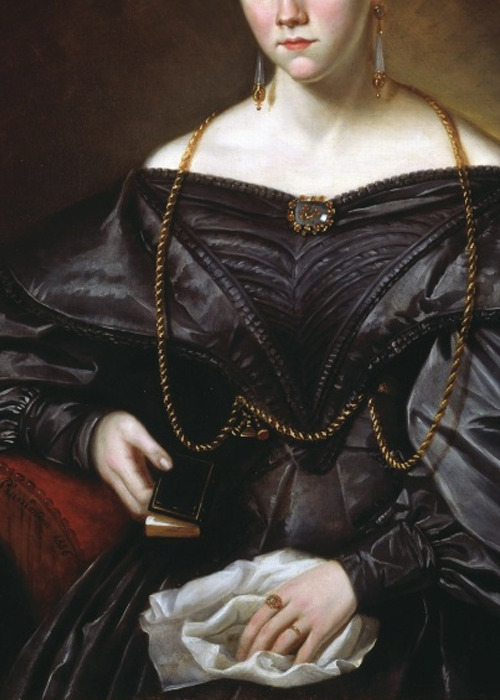
Details in Black
A Closer Look at Historical Fashion in Art
Portrait of a Lady with a Fan, 1890, by Franz Xaver Winterhalter
Portrait of Catherine of Braganza, Queen of England, c. 1665, by Peter Lely
Portrait of Mrs. James Guthrie, c. 1865, by Frederic Leighton
Portrait of Natalia Sanguszkowa née Potocka, 1829, by Johann Ender
Portrait of a Woman, 1581, by Frans Pourbus the Elder
Madame Jacques-Louis Leblanc, 1823, by Jean Auguste Dominique Ingres
Portrait of Amalia van Solms, 1650, by the workshop of Gerard van Honthorst
Portrait of Lady Dacre, 1633, by Anthony van Dyck
Madame X (Madame Pierre Gautreau), 1884, by John Singer Sargent
Portrait of Jane Drummond, 1836, by Antoine Plamondon
#art#art history#art history blog#painting#artwork#detail#19th century#art detail#original art#black#fashion#art fashion#historical#historical art#historical fashion#portrait#details in black#details#1800s#1800's#1500's#1500s#16th century#1600s#1600's#17th century#Franz Xaver Winterhalter#Peter Lely#Frederic Leighton#Johann Ender
741 notes
·
View notes
Text
How many of these "Top 100 Books to Read" have you read?
(633) 1984 - George Orwell
(616) The Great Gatsby - F. Scott Fitzgerald
(613) The Catcher In The Rye - J.D. Salinger
(573) Crime And Punishment - Fyodor Dostoyevsky
(550) Catch-22 - Joseph Heller
(549) The Adventures Of Tom And Huck - Series - Mark Twain
(538) Moby-Dick - Herman Melville
(534) One Hundred Years Of Solitude - Gabriel Garcia Marquez
(527) To Kill A Mockingbird - Harper Lee
(521) The Grapes Of Wrath - John Steinbeck
(521) Lolita - Vladimir Nabokov
(492) Pride And Prejudice - Jane Austen
(489) The Lord Of The Rings - Series - J.R.R. Tolkien
(488) Brave New World - Aldous Huxley
(480) Ulysses - James Joyce
(471) Jane Eyre - Charlotte Bronte
(459) Wuthering Heights - Emily Bronte
(398) The Brothers Karamazov - Fyodor Dostoyevsky
(396) Great Expectations - Charles Dickens
(395) To The Lighthouse - Virginia Woolf
(382) War And Peace - Leo Tolstoy
(382) The Sun Also Rises - Ernest Hemingway
(380) The Sound And The Fury - William Faulkner
(378) Alice's Adventures In Wonderland - Series - Lewis Carroll
(359) Frankenstein - Mary Wollstonecraft Shelley
(353) Heart Of Darkness - Joseph Conrad
(352) Middlemarch - George Eliot
(348) Animal Farm - George Orwell
(346) Don Quixote - Miguel de Cervantes Saavedra
(334) Slaughterhouse-Five - Kurt Vonnegut
(325) Les Misérables - Victor Hugo
(320) Harry Potter - Series - J.K. Rowling
(320) The Chronicles Of Narnia - Series - C.S. Lewis
(317) Anna Karenina - Leo Tolstoy
(308) Lord Of The Flies - William Golding
(306) Invisible Man - Ralph Ellison
(289) The Golden Bowl - Henry James
(276) Pale Fire - Vladimir Nabokov
(266) Gone With The Wind - Margaret Mitchell
(260) The Count Of Monte Cristo - Alexandre Dumas
(255) The Hitchhiker's Guide To The Galaxy - Series - Douglas Adams
(252) The Life And Opinions Of Tristram Shandy, Gentleman - Laurence Sterne
(244) Madame Bovary - Gustave Flaubert
(237) Vanity Fair - William Makepeace Thackery
(235) The Trial - Franz Kafka
(233) Absalom, Absalom! - William Faulkner
(232) The Call Of The Wild - Jack London
(232) Emma - Jane Austen
(229) Beloved - Toni Morrison
(228) Little Women - Louisa May Alcott
(224) A Passage To India - E.M. Forster
(215) Dune - Frank Herbert
(215) A Portrait Of The Artist As A Young Man - James Joyce
(212) The Stranger - Albert Camus
(209) One Flew Over The Cuckoo's Nest - Ken Kesey
(209) The Idiot - Fyodor Dostoyevsky
(206) Dracula - Bram Stoker
(205) The Picture Of Dorian Gray - Oscar Wilde
(197) A Confederacy Of Dunces - John Kennedy Toole
(193) Mrs. Dalloway - Virginia Woolf
(193) The Age Of Innocence - Edith Wharton
(193) The History Of Tom Jones, A Foundling - Henry Fielding
(192) Under The Volcano - Malcolm Lowry
(190) The Odyssey - Homer
(189) Gulliver's Travels - Jonathan Swift
(188) In Search Of Lost Time - Marcel Proust
(186) Midnight's Children - Salman Rushdie
(185) An American Tragedy - Theodore Dreiser
(182) The Book Thief - Markus Zusak
(180) Siddhartha - Hermann Hesse
(179) The Magic Mountain - Thomas Mann
(178) Things Fall Apart - Chinua Achebe
(178) Tropic Of Cancer - Henry Miller
(176) The Outsiders - S.E. Hinton
(176) On The Road - Jack Kerouac
(175) The Little Prince - Antoine de Saint-Exupery
(173) The Giver - Lois Lowry
(172) Brideshead Revisited - Evelyn Waugh
(172) A Clockwork Orange - Anthony Burgess
(171) Charlotte's Web - E.B. White
(171) The Ambassadors - Henry James
(170) Infinite Jest - David Foster Wallace
(167) The Complete Stories And Poems - Edgar Allen Poe
(166) Ender's Saga - Series - Orson Scott Card
(165) In Cold Blood - Truman Capote
(164) The Wings Of The Dove - Henry James
(163) The Adventures Of Augie March - Saul Bellow
(162) As I Lay Dying - William Faulkner
(161) The Hunger Games - Series - Suzanne Collins
(158) Anne Of Greene Gables - L.M. Montgomery
(157) Atlas Shrugged - Ayn Rand
(157) Neuromancer - William Gibson
(156) The Help - Kathryn Stockett
(156) A Song Of Ice And Fire - George R.R. Martin
(155) The Good Soldier - Ford Madox Ford
(154) The Da Vinci Code - Dan Brown
(153) I, Claudius - Robert Graves
(152) Wide Sargasso Sea - Jean Rhys
(151) The Portrait Of A Lady - Henry James
(150) The Death Of The Heart - Elizabeth Bowen
#books#book lists#p#im posting this so i can reblog it with my own crossed out list and i encourage others to do the same if you want to#i dont actually know how many ive read yet myself
20 notes
·
View notes
Text

Portrait of Vivienne Westwood by Christian Shambenait
It took me a few days, but with the death of icon-goddess-genius Vivienne Westwood, I had to make a post here about her work and how massively influential she was during her lifetime, and why her influence will remain for years to come.
"I take something from the past that has a sort of vitality that has never been exploited – like the crinoline – and get very intense. In the end you do something original because you overlay your own ideas." Vivienne Westwood
Born in 1941 in Tintwistle, Cheshire, Vivienne Westwood (nèe Swire) did not have a "traditional" path into fashion and design, even though she took a course of jewellery at the Harrow Art School (she thought it was not for her, being a working-class girl), she became a primary school teacher and got married with Derek Westwood, had a kid... But she was a maker of things and a creative mind, and made her own wedding dress and jewellery that she sold at a stall.

Malcolm McLaren and Vivienne Westwood at the Let It Rock store (London, January 1972).
But all of that was about to change when she met Malcolm McLaren. She got divorced, moved with him and had another son. McLaren became the manager of the Sex Pistols and with Westwood, they became a creative duo who dressed the band and became VERY influential during th punk era. We must add the after that they opened a store called SEX, which was the meeting place for the punk scene in London in the 1970s. So, yeah. punk wouldn't look like it does without Vivienne Westwood.
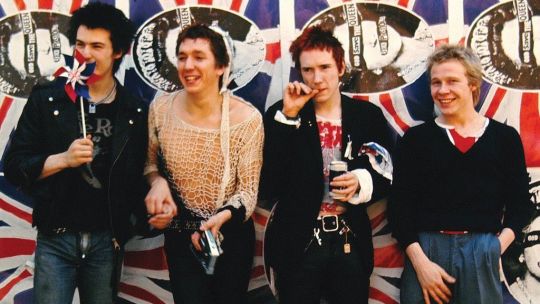
"Vivienne and Malcolm use clothes to shock, irritate and provoke a reaction but also to inspire change. Mohair jumpers, knitted on big needles, so loosely that you can see all the way through them, T-shirts slashed and written on by hand, seams and labels on the outside, showing the construction of the piece; these attitudes are reflected in the music we make. It's OK to not be perfect, to show the workings of your life and your mind in your songs and your clothes."
Viv Albertine
This era of Westwood's design has a lot of collaboration, especially with McLaren, and they produced under the Worlds End label until 1985. These collections have each a theme and a name, and here is when we star seeing Vivienne Westwood's eye and curiosity for historical fashion, as well as nods and details especially from the 18th and 19th centuries. Of course, it was the 80s and all was way more colourful than what we thing of more contemporary Vivienne Westwood, but you can see that EVERYTHING was already there in the period which she dubbed as "New Romantic" with collections like Witches, Punkature, and Pirate.
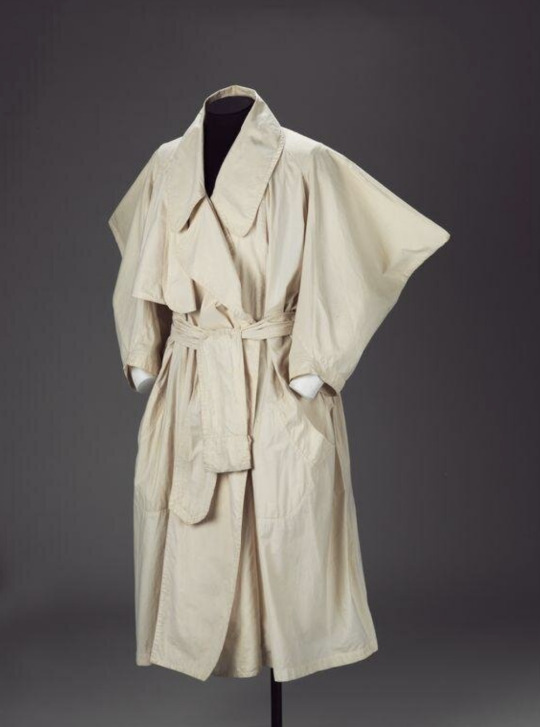

Raincoat and belt, from the 1983 Witches collection, Victoria & Albert Museum.

Ensemble from the 1982 Pirates collection, Victoria & Albert Museum.

Knitted top from the 1983 Witches collection, featuring Keith Haring's graffiti.
The 1988-1991 era is called "The Pagan Years", and we can see the change of the main looks from punks to girls in clothes that parodied the upper class. And it is then that I think the ultimate Vivienne Westwood is seen: corsets, crinolines, tartan, colourful stripes... Here is when we begin to see the historical references taken to a extreme, mixed with the modern word and sense of humour, while always being perfectly made and patterned and fun for all genders.
Here some of my favourite ones:
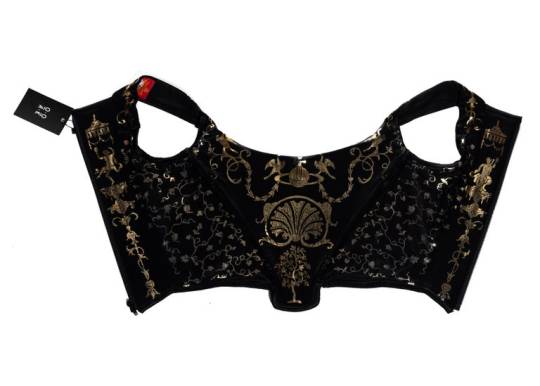

Vivienne Westwood black satin corset with metallic gold pattern, ss 1992
Stays, late 17th-early 18th century, Met Museum.

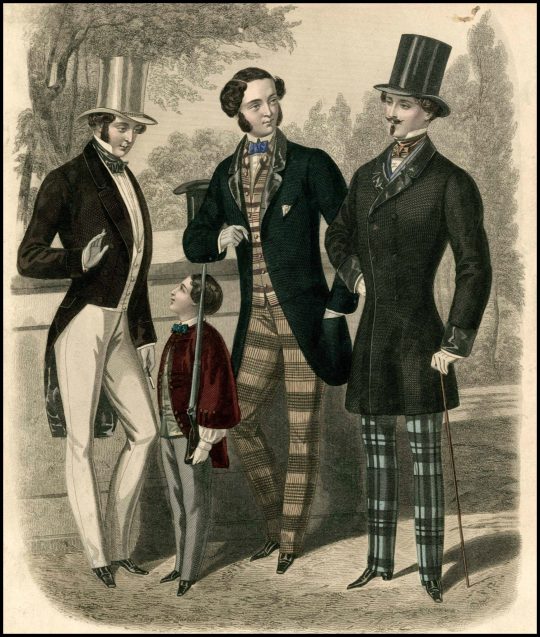
Vivienne Westwood autumn/winter 2020.
Fashion illustration on L’Elegant, 1853.


Carmagnole Jacket, France, c. 1790 / Sans-culotte Trousers, France, c. 1790, Los Angeles County Museum of Art.
Vivienne Westwood, autumn/winter 2021.
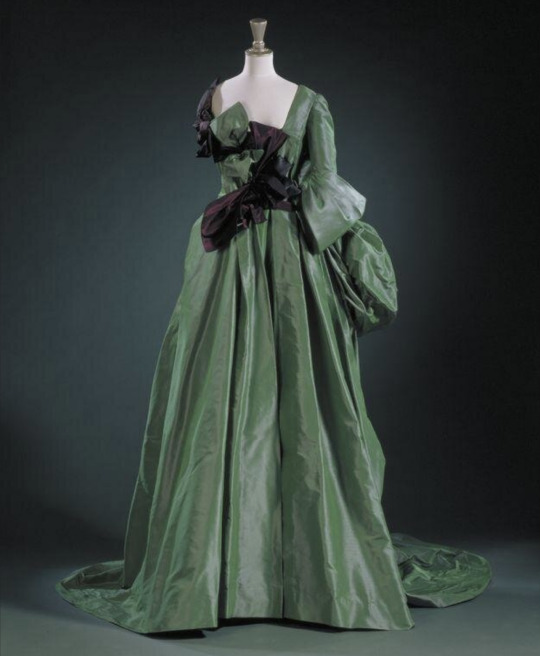


"Watteau" evening dress, 1996, Vivienne Westwood, Victoria & Albert Museum.
"L’enseigne de Gersaint" (detail), Jean-Antoine Watteau.
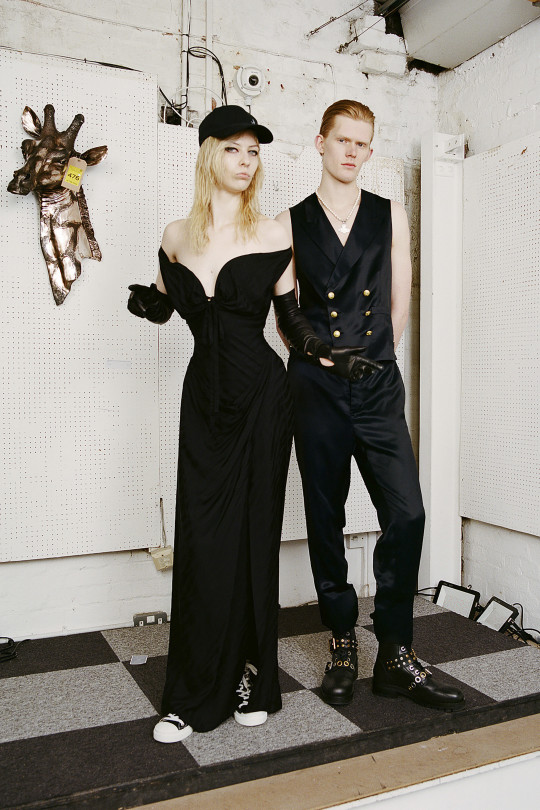

Vivienne Westwood, autumn/winter 2022.
Portrait of Madame X, 1884, John Singer Sargent.
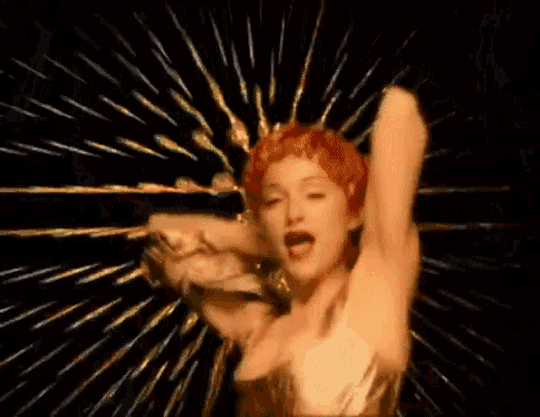


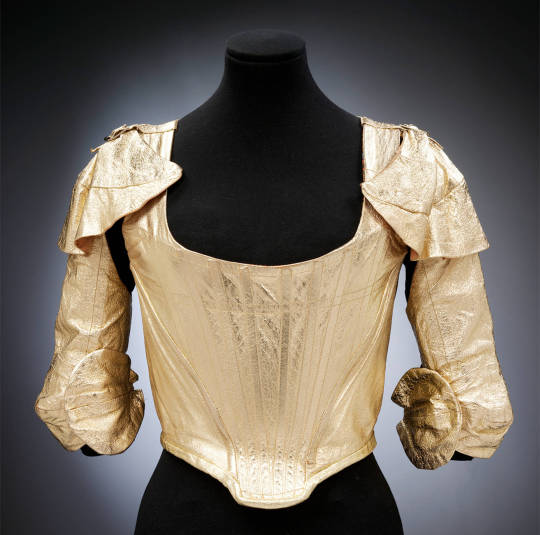
Madonna in her Fever video, 1993, wearing Vivienne Westwood.
Gold leather corset, sleeves and mini skirt, 'Time Machine' ss 1988, Vivienne Westwood.
Always a creative force and a punk at heart, Vivienne Westwood was also an activist, putting front and center important causes like climate change, or sustainability and transparency in the brand's supply chain.

Rose McGowan walking the autumn/winter 2019 Vivienne Westwood catwalk.

Designer Vivienne Westwood looks through the glass toward the media during a photocall at a retrospective exhibition to celebrate her 30 years in the fashion industry, at the Victoria and Albert Museum in London, Tuesday March 30, 2004.
What is your favourite look/garment of this iconic designer? And does it have an historical reference? Let us all know!
198 notes
·
View notes
Text
Good on Trip
1 note
·
View note